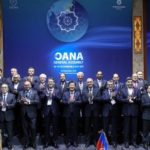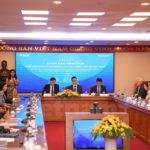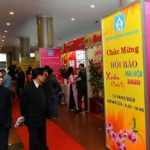The Vietnam News Agency Publishing House released the memoirs of Tran Mai Huong, former general director of the VNA, on December 5. In his memoirs, he shares the memories and moments he covered as a war correspondent.
| Veteran journalist Tran Mai Huong at the launch of his memoirs on December 5. Photo: Vietnam News Agency |
Titled Hoi Ky Phong Vien Chien Truong – Tren Nhung Neo Duong Chien Tranh va Hoa Binh (War Correspondent’s Memoirs – On the Paths of War and Peace), the 500-page book chronicles the nation’s major milestones during the war for reunification, coinciding with Huong’s time on the battlefield.
Journalism is an extremely dangerous profession, especially for war correspondents who are often in the line of fire to report the latest news of war events. They are literally in the middle of life-or-death situations.
The book gives a crystal-clear account of the war, from the time he was evacuated from bombing raids at the age of 13 to the time Huong worked on the battlefields, delivering the stories of the fighting.
“Suddenly, the ground shook and I witnessed a series of explosions scattered right in front of me, creating a vacuum that left me breathless, followed by shock waves reverberating through the air…,” he wrote.
The author was one of the first reporters on the front lines when the central province of Quang Tri was liberated in 1972, and after the signing of the Paris Peace Accords in 1973, he witnessed the return of North Vietnamese soldiers who had been held as prisoners of war.
In 1975, Huong was the first to report the liberation of the central province of Thua Thien-Hue Province and then Danang. He was the one who took the picture of the Liberation Army tanks entering the Independence Palace on April 30, 1975. Huong described the moment as “an unforgettable memory in his career”.
From writing stories about the Vietnamese fight for national reunification against the US and its supporters, the senior journalist was sent to the border war against the genocidal Cambodian regime of Pol Pot. His reports on the efforts of the Vietnamese government and army to restore peace in Cambodia and help the local people rebuild their lives were one of the most important sources of information on the war for the Vietnamese media at the time.
Then, he was assigned to the northern border to cover the war for national border defense. Huong also had the opportunity to visit the war memorials in New York and Washington. His records and writings show that overseas Vietnamese in the US are always patriotic and expect their homeland to become prosperous and powerful.
Tran Mai Huong was born in 1952 in Hai Duong City, the northern province of Hai Duong.
“I wrote the book at the age of 70, describing every moment, event, and person that was part of my life,” he said at the launch ceremony.
“Having spent 55 years in journalism, I’ve experienced war and peace and witnessed many changes in modern Vietnam. For me, it is a great privilege.”
He said that being a war correspondent is a job of challenges and hardships.
“A war correspondent must also be a soldier to arrive on the scene in time to capture the precious moments. Behind every word and picture is the determination to overcome hardships and accomplish tasks,” Huong said.
Le Quoc Minh, editor-in-chief of Nhan Dan (People) newspaper and chairman of the Vietnam Journalists Association, said the book was made with the blood and sweat of Vietnamese people and soldiers.
“I hope the book will be well received by all Vietnamese reporters and translated into different languages to help foreigners better understand the Vietnamese people and nation,” Minh said.
Celebrating 70 Years of Vietnam Journalists’ Association
On April 21, 1950, the first Congress of the Vietnam Journalists’ Association was held in Roong Khoa hamlet, Diem Mac commune, Dinh Hoa district, Thai Nguyen province.









